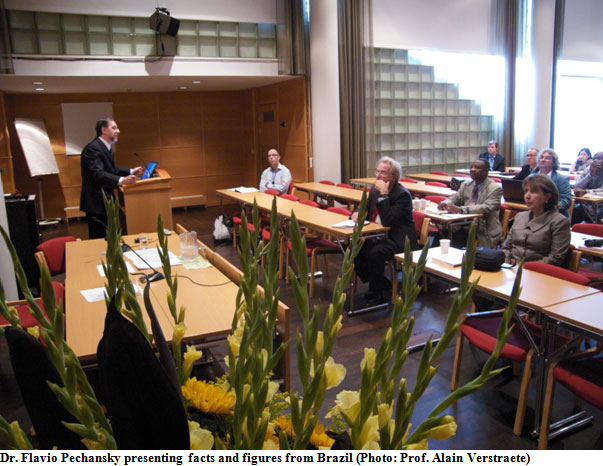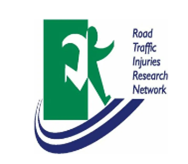By Hallvard Gjerde, Norwegian Institute of Public Health, Oslo, Norway.
Background
Each year about 1.2 million people are killed in road traffic accidents (RTA), and about 85% of the deaths occur in LMI countries. In most of those countries there are more than 20 fatalities per 10 000 vehicles per year, in some countries more than 100. As a comparison, the number in Norway is about 1. In the same way as in highly motorised countries, a large proportion of RTA is related to alcohol use, often in combination with speeding, and perhaps without using seatbelt by car drivers and passengers, or helmets by motorcycle riders. In addition, a large proportion of the fatal victims are pedestrians, many of them are children. Due to an increasing number of motor vehicles in LMI countries, combined with increased use of alcohol and drugs, the number of traffic accidents is expected to increase. RTAs are expected to be the third leading cause of death and disability worldwide by 2020. Therefore, the ICADTS organizing committee wanted to give a special focus on LMI countries in this year’s conference by organizing this workshop.
Six scientists were invited to give presentations on the situation regarding alcohol and other psychoactive substances in relation to traffic safety in their own countries: Dr. Martha Hijar (Mexico), Dr. Flavio Pechansky (Brazil), Dr. Francis K. Afukaar (Ghana), Dr. Edeaghe Ehikhamenor (Nigeria), Dr. Ashis Das (India) and Dr. Jonathon Passmore (Vietnam).
Summary of the workshop
The reported and/or estimated numbers of fatally injured drivers per year in those countries are for Mexico 35 000 (population: 106 mill.), Brazil 35 to 66 000 (population 196 mill.), Ghana 1 800 (Population 24 mill.), Nigeria 6 to 35 000 (population: 145 mill.), India 118 000 (population: 1.2 billions), and Vietnam 11 to 17 000 (population: 86 mill.). Many countries have no complete traffic accident registries, so it is difficult to determine the exact numbers of RTA fatalities.
The proportions of fatally injured drivers who were driving under the influence of alcohol has been determined in a few studies, and was in Mexico found to be 30-50%, in Brazil 32-43%, and in Vietnam 34%. Alcohol was found in blood samples from 11-40% or drivers injured in India. No comprehensive studies on this problem have been performed in those countries. However, the available data are similar to those observed in highly motorized countries, and show that alcohol plays a major role in RTAs also in LMI countries.
The prevalence of drunk driving among random drivers has been studied in just a few LMI countries. Dr Afukaar reported that in Ghana, 7.3% of random drivers have blood alcohol concentrations (BAC) above the legal limit of 0.8 g/l, which is significantly higher than in Europe, North America and Australasia. Dr. Pechansky told that 4.8% of random drivers in Brazilian state capitals were found to have positive BAC, while at night in Sao Paolo, 23% had positive BAC.

Very few countries have studied the incidence of drug use among random drivers and among fatally injured drivers. A few studies have been performed in Brazil and Nigeria, showing that cannabis is the most significant non-alcohol drug used by drivers. However, the use of cocaine, amphetamines and morphine, and possibly some medicinal drugs, might also be significant factors in RTAs in some LMI countries.
The enforcement of driving under influence laws in LMI countries is often low, partly because of lack of understanding about the risks, partly because few breath alcohol instruments are available.
Dr. Passmore informed about the progress in knowledge, law, and enforcement in Vietnam because of projects funded by the World Bank and Bloomberg. These projects were run in only a few regions of the country.
Dr. Ehikhamenor presented some work that he and his organization had performed in Nigeria in attempts to increase the knowledge and understanding of the risks posed by alcohol and drugs in road traffic. For more information, see http://www.savan.org.

Dr. Afukaar informed about the exceptionally high number of pedestrians, especially children, who are killed in RTAs in Ghana. Actions are now taken to reduce speeding in villages and urban areas and thereby reduce the number of accidents.
Dr. Das was concerned about the expected increase in RTAs in India because of the rapid increase in the number of motor vehicles and the increase in alcohol consumption, and he called for more research on alcohol, drugs and traffic safety in India.
Conclusion: Common problems in many LMI countries are a lack of knowledge among drivers about the risk for involvement in RTA after using alcohol or drugs, combined with lack of enforcement of driving under influence laws. In many countries the police have no or insufficient numbers of breath alcohol instruments or lack of laboratories for alcohol and drug testing of blood samples. To improve the understanding of the dangers the use of alcohol and drugs constitute for traffic safety in those countries, programs to inform drivers, politicians and police officers should be started. In addition, the enforcement should be improved, and research to generate empirical data should be performed. Such programs would contribute in reducing the number of traffic accidents in the same way as already done in highly motorized countries.
